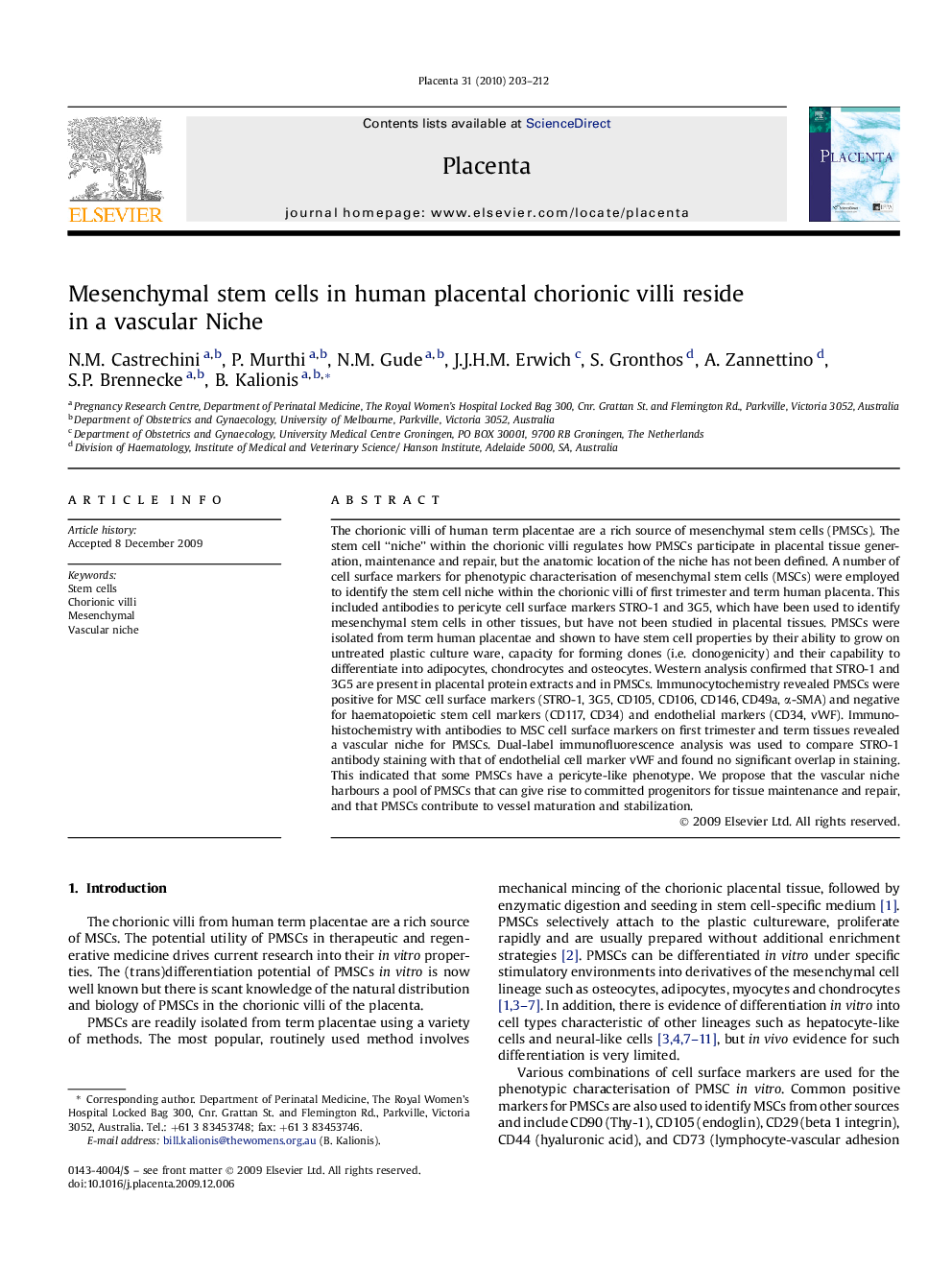| کد مقاله | کد نشریه | سال انتشار | مقاله انگلیسی | نسخه تمام متن |
|---|---|---|---|---|
| 2789592 | 1154516 | 2010 | 10 صفحه PDF | دانلود رایگان |

The chorionic villi of human term placentae are a rich source of mesenchymal stem cells (PMSCs). The stem cell “niche” within the chorionic villi regulates how PMSCs participate in placental tissue generation, maintenance and repair, but the anatomic location of the niche has not been defined. A number of cell surface markers for phenotypic characterisation of mesenchymal stem cells (MSCs) were employed to identify the stem cell niche within the chorionic villi of first trimester and term human placenta. This included antibodies to pericyte cell surface markers STRO-1 and 3G5, which have been used to identify mesenchymal stem cells in other tissues, but have not been studied in placental tissues. PMSCs were isolated from term human placentae and shown to have stem cell properties by their ability to grow on untreated plastic culture ware, capacity for forming clones (i.e. clonogenicity) and their capability to differentiate into adipocytes, chondrocytes and osteocytes. Western analysis confirmed that STRO-1 and 3G5 are present in placental protein extracts and in PMSCs. Immunocytochemistry revealed PMSCs were positive for MSC cell surface markers (STRO-1, 3G5, CD105, CD106, CD146, CD49a, α-SMA) and negative for haematopoietic stem cell markers (CD117, CD34) and endothelial markers (CD34, vWF). Immunohistochemistry with antibodies to MSC cell surface markers on first trimester and term tissues revealed a vascular niche for PMSCs. Dual-label immunofluorescence analysis was used to compare STRO-1 antibody staining with that of endothelial cell marker vWF and found no significant overlap in staining. This indicated that some PMSCs have a pericyte-like phenotype. We propose that the vascular niche harbours a pool of PMSCs that can give rise to committed progenitors for tissue maintenance and repair, and that PMSCs contribute to vessel maturation and stabilization.
Journal: Placenta - Volume 31, Issue 3, March 2010, Pages 203–212